Intro to Star Wars Armada
by Jason Huffstetler
A long, long time ago, in a galaxy far, far away…
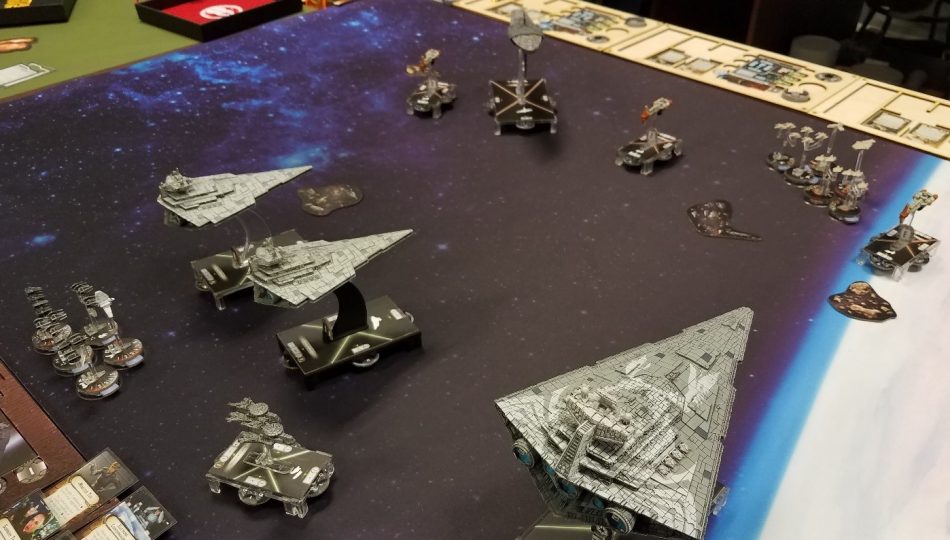
Above a barren desert planet, the fledgling Rebel fleet maneuvers to engage the Imperial Star Destroyer, Chimaera. The fearsome vessel was flanked by a pair of smaller, though powerful, Victory-class Star Destroyers. Whilst the Rebel fleet was composed of only a smaller Ordnance Cruiser and four, still smaller, Hammerhead Corvettes. The Rebels were spread out in an effort to evade the blockading Imperials and hopefully escape to hyperspace.
The Star Destroyer Chimaera menacingly approached the Rebel line of ships, its long-range batteries firing salvos that splayed across the shields of the smaller Rebel ships. The Rebel Corvettes were safer at long range, but the Chimaera was closing fast…
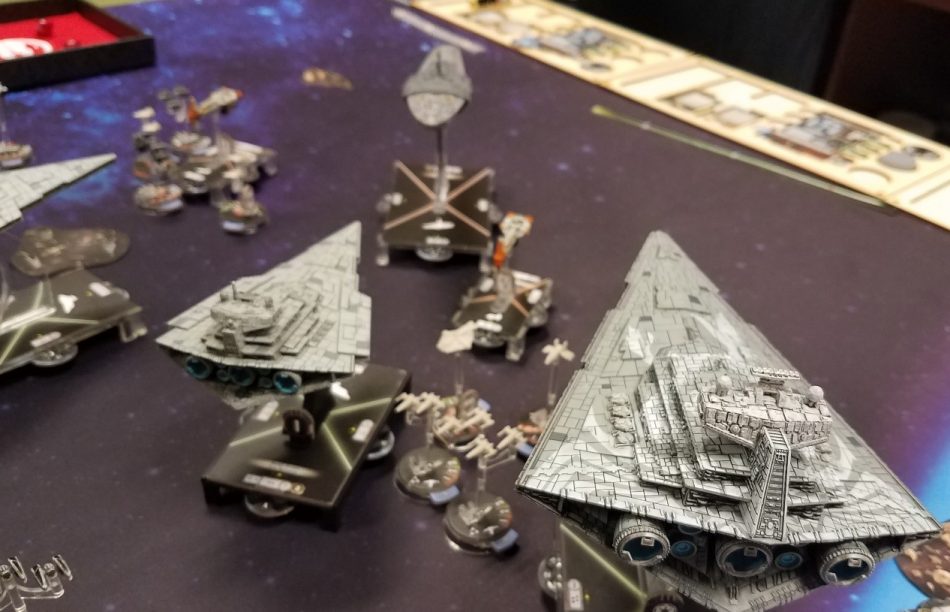
All three of the Star Destroyers converged on the Rebel command ship, ignoring some of the smaller Rebel ships. Rebel starfighters, X-Wings, A-Wings, and even Y-Wings maneuvered to engage the Chimaera, as it barreled towards the Rebel cruiser. The small snub-fighters fired volleys of torpedoes that violently impacted with the Star Destroyer’s forward shields. One of the volleys broke through and caused hull damage.
The Chimaera seemed unfazed, like a crazed Bantha fending off mere insects, it fired point-defense flak against the Rebel fighters, destroying several of them as they broke off their attack pattern.
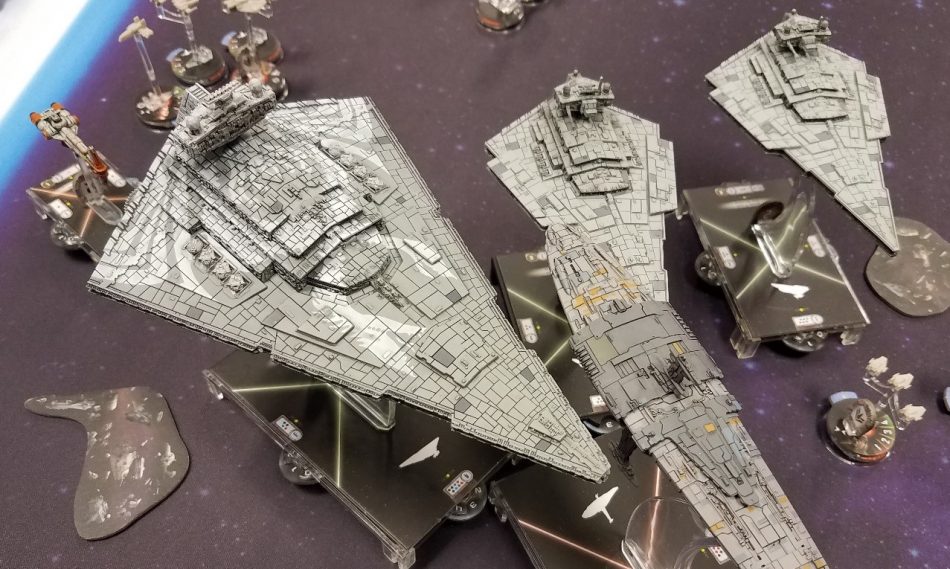
Uninhibited, the Chimaera and its fellow Destroyers closed in on the Rebel Cruiser, ramming the smaller ship along its flanks. In a desperate moment, the Rebel Ordnance Cruiser fired a volley of cluster munitions. At close range, the munitions easily penetrated the shields of both Destroyers, ripping into their hulls as if they were paper. The volley was so devastating that the center Victory Star Destroyer suffered critical damage to its superstructure, causing it to list to port.

Exploiting the gap, the Rebel Cruiser skillfully maneuvered between the destroyers, escaping almost certain death from the Chimaera. With a flash, the Rebel fleet escaped to hyperspace, leaving a scarred Imperial fleet, their wounds smoldering in the vacuum of space…
…. The final round of the battle was over, but the war continues to rage on across the galaxy.
Welcome to Star Wars Armada, an amazing, captivating tabletop game that has reinvigorated the genre of naval space combat.

As a history buff, I was naturally drawn to the rich Star Wars expanded universe. The level of detail and epic battles depicted in the movies, comics, books, and games all combined made me an avid fan and amateur historian of the Star Wars universe. Yes, I used the word historian because I indeed studied Star Wars lore as much as I studied WWI and WWII history for my college major.
Years ago I was first introduced to table-top gaming by a friend’s Flames of War collection. Of course, I was enthralled, but sadly it was before I had fun-money of my own to invest in the game. The intricate details FoW’s models and historical authenticity were certainly what attracted me to the franchise. Then during the early part of my military career, I had coworkers who were avid players of Battlefleet Gothic: Armada. Battlefleet was fascinating, and the combat system exciting, but I could not relate to the lore as it was unfamiliar to me.
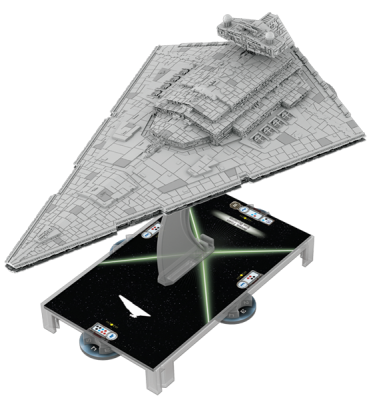
Star Wars Armada combined elements that I appreciated in both FoW and Battlefleet; awesome models with authentic detail, an exciting battle system, and best of all a lore that I easily identified with. I first learned of Star Wars Armada while on my first military deployment back in the fall of 2015, which was right about when Wave II was released.
Wave II was the largest expansion for the game, especially with the legendary Imperial Star Destroyer officially introduced into the game. To even the casual fan, the iconic Star Destroyer is an intimidating sight and symbolic to the epic space battles of the Star Wars franchise. I knew as soon as I saw the model, I had to own this game.
Fast forward two and half years later, the franchise has significantly grown, boasting five more waves totaling 24 immersive expansions. I’ve been especially thrilled with the huge concentration of players here in the Northern Virginia/Maryland area.
It would be unfair to not acknowledge Armada’s roots which stem from Fantasy Flight Game’s other highly popular game, X-Wing. Aside from sharing a common producer and franchise, however, the similarities end there. Armada is accurately described as a game of naval strategy. Capital ships, having hundreds even thousands of crew members, carefully and skillfully plan ahead their maneuvers as they angle for shots against the enemy. A wrong move early on can have dire consequences later in the engagement.
The game has an intuitive, yet an intricate system which I will attempt to illustrate.
A typical Armada game has 6 rounds, each then divided into four phases: Command Phase, Ship Phase, Squadron Phase, and Refresh Phase.
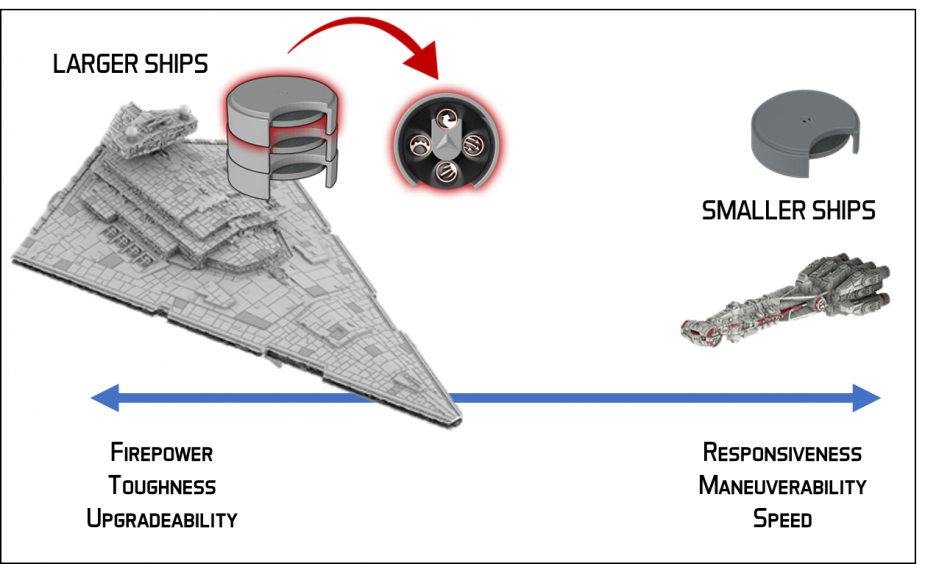
Command Phase is when you, as admiral of your fleet, issue commands to your ships, you will find yourself having to always be planning two or even three turns ahead. The hallmark of Star Wars Armada is planning out your ships’ actions. Larger ships are more powerful but also the less responsive to your commands.
While smaller ships are faster and more adaptable to the tide of battle, they risk being outgunned by larger vessels. Commands are carried out with the use of stack-able dials, or Command Dials, as they are intuitively called. The larger the ship, the more dials you have and consequently the further ahead you must plan your ship’s actions. Each dial has a choice of four powerful commands:
– Navigate (change ship’s speed/yaw)
– Activate Squadrons (early movement of starfighters)
– Focus Firepower (enhance ship’s damage)
– Repair (regenerate shields/repair hull damage)
Ship Phase is arguably the main event as this is when your ships attack and move. When a ship is activated, the top-most Command Dial is revealed, and command displayed carried out. Then engage enemy ships in range. Range is determined by a 12″ ruler divided into three range categories which also have corresponding colors of dice: Long (red dice), Medium (blue dice), and Short (black dice). Each ship has four hull zones that offer a unique combination of dice.
Generally, the closer the range, the more effective the dice are in terms of damage. Some ships are broadsiders, while others are better suited to attack head-on. Getting behind a ship is almost universally bad news as no ship has a particularly defensible rear-end. It is also worth to note that larger ships tend to have more options for upgrades. Upgrades can significantly enhance your ship’s abilities particularly its chances of dealing damage against the enemy.
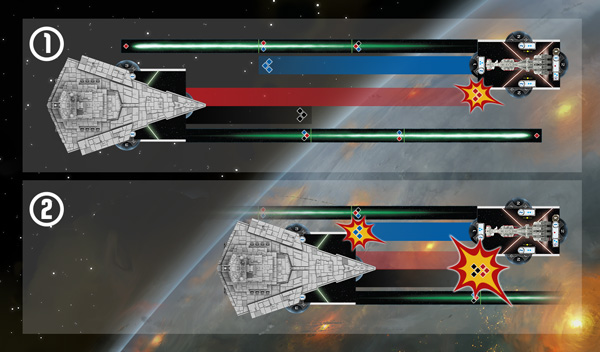
After a ship attacks, it then moves. Armada has a particularly clever method of movement using its signature movement tool. Every ship has a certain range of speed, and with each speed category a certain turn rate (or yaw). The below example illustrates a Rebel Corvette moving at Speed 3, commits a 1-yaw right turn and then a 2-yaw left turn.
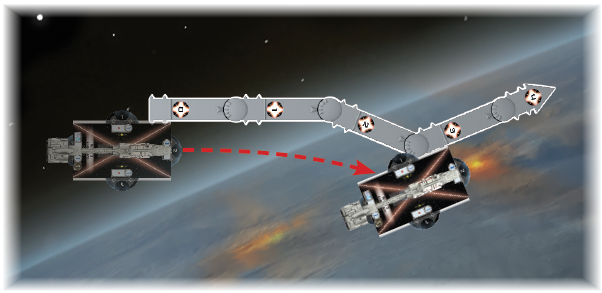
Squadron Phase is the movement and engagement of supporting starfighter squadrons. Generally, during this phase squadrons either move or attack but not both. However, squadrons can move and attack if specifically activated by a ship during the ship phase (effectively moving early and getting a jump on enemy squadrons or ships). Squadrons, while less powerful than capital ships, compliment the ships with their adaptability and versatility. Movement and attacks are measured with a simple 12″ ruler marked with speeds 1-5. In the illustration below, for example, an X-Wing squadron has a movement value of 3 and can move in any direction within that range.

All squadrons engage enemy squadrons or ships at range 1, and Armada has seen a wide variety of special squadron abilities introduced to the game. Some examples are: Bomber (extra damage to ships), Escort (distracts enemy fighters), Counter (retaliates against attacking squads), Swarm (dice re-rolls if attacking in a swarm) and many others.
Refresh Phase is the final phase and is the resetting of Command Dials and transition into the next round. As mentioned previously, a larger ship may have multiple Command Dials so when a new command is selected, it goes to the bottom of the queue (or stack). So again, while larger ships have more power, careful planning is needed to ensure they have the right commands to enhance their abilities at the right time. The game ends after six rounds, which, depending on the players, can last for 90 to even 120 minutes.
In summary, I hope you enjoyed my take on what makes Star Wars Armada unique and exciting. You can probably tell I am extremely passionate about this marvelous game. I hope to bring you additional intro material and I am always looking to demo for new players. I will leave you with a quote from my most favorite Star Wars character that I think is quite appropriate.
War is primarily a game of skill. It is a contest of mind matched against mind, tactics matched against tactics. But there is also an element of chance that is more suited to games of cards or dice. A wise tactician studies those games, as well, and learns from them…
– Grand Admiral Thrawn, Star Wars Thrawn by Timothy Zahn
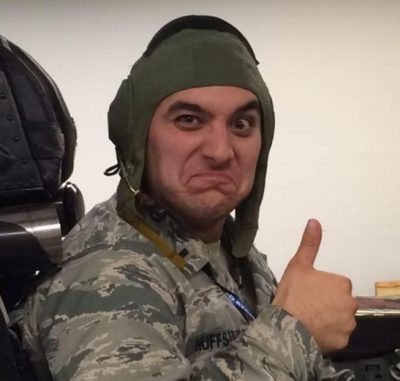 Jason Huffstetler is new guest writer for NDNG. He is an active member of the NOVA Fleet gaming group, one of the largest concentrations of SW Armada players in the United States. A former Air Force officer with an education in military history and foreign policy, Jason has a life-long passion in both WWII and Star Wars. Aside from tabletop gaming, he is an avid modeler and miniatures painter/detailer. He resides in Fairfax County, VA with his two dogs.
Jason Huffstetler is new guest writer for NDNG. He is an active member of the NOVA Fleet gaming group, one of the largest concentrations of SW Armada players in the United States. A former Air Force officer with an education in military history and foreign policy, Jason has a life-long passion in both WWII and Star Wars. Aside from tabletop gaming, he is an avid modeler and miniatures painter/detailer. He resides in Fairfax County, VA with his two dogs.

I don’t remember Battlefleet having fighters and bombers either. That is another reason why I like Armada more. But I may play battle fleet now… if anyone would play it. That is the real problem. I could grab anyone off the street and the chances are they would recognize the ships in Armada, and be interested in the game. Not so with Battlefleet. 99.99% of the people would not be interested in knowing what the game is about. However most people would give Armada a shot, just because it is Star Wars. On top of that it is a fairly easy game to play. Again, not so with Battlefleet from what I remember.
I’m more than willing to try Battlefleet again, I just latched onto Armada more easily. You are right though, Armada has that universal appeal and recognition.
Awesome article Jason! I need to dust off my models 🙂
Thanks Tom! I highly recommend picking up one of the Wave 7 expansions. Whether you are Rebel or Imperial, its been the best wave yet!
This is a great game!!!!
Indeed! I hope to write of more upcoming engagements.